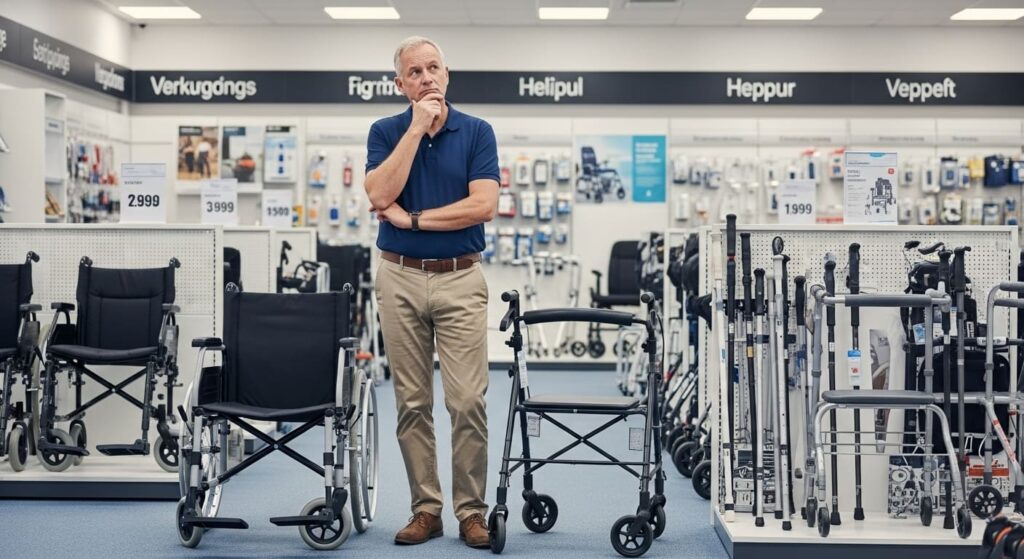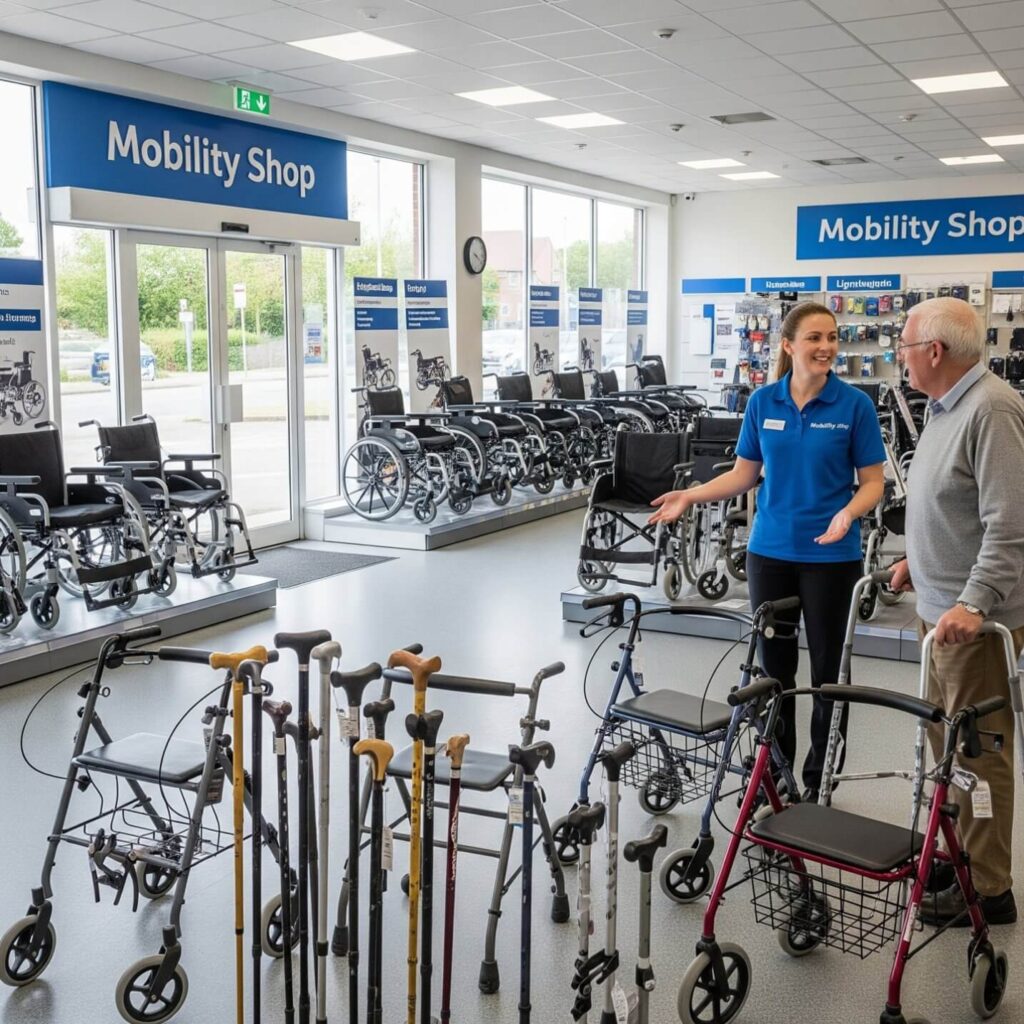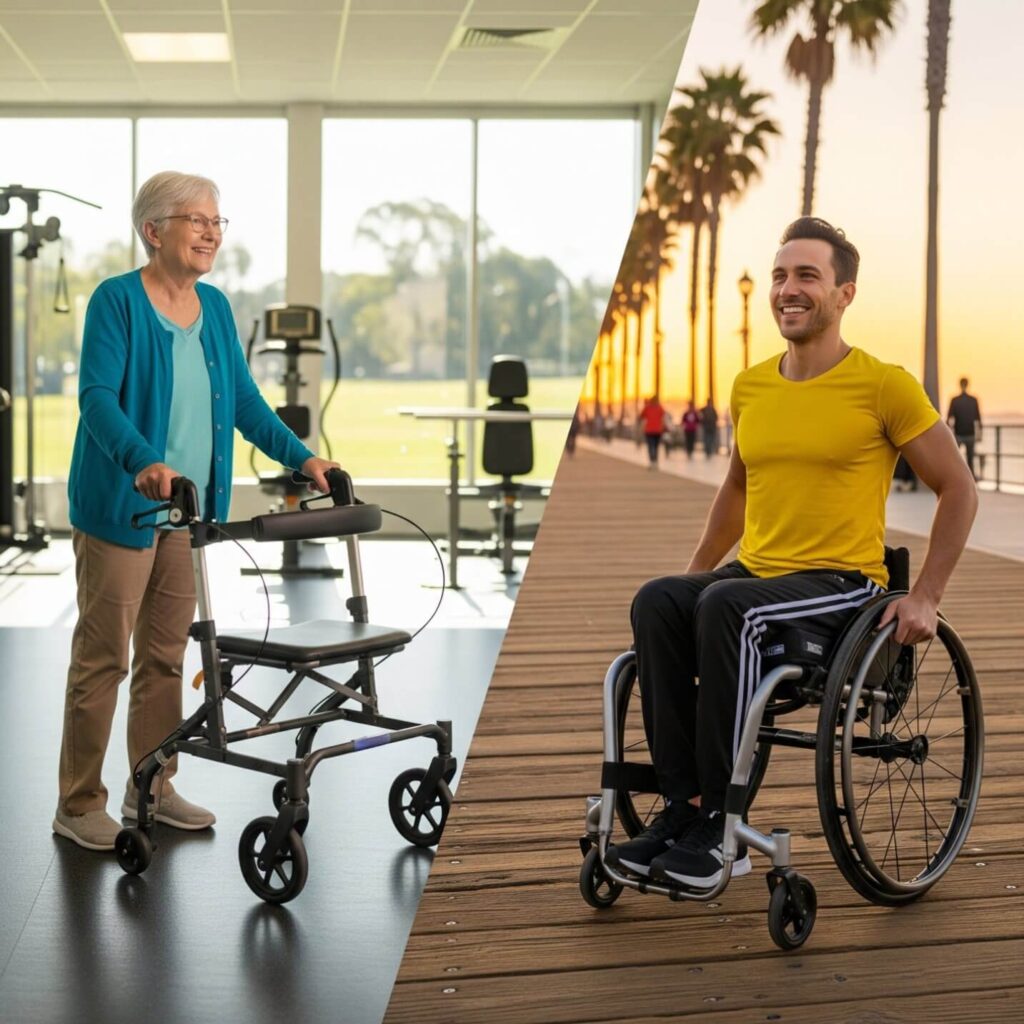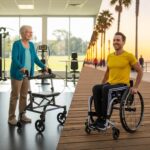Wheelchair or Walking Aids: Choosing the Right Mobility Equipment

Table of Contents
Why Choosing the Right Mobility Aid Matters?
If you are thinking whether a wheelchair or a walking aid is right for you, you are not alone. Choosing the right mobility equipment can be overwhelming with so many options out there. The main difference between walking aids and wheelchairs and which one better suits your health, lifestyle and your daily needs.
Fear of falling, physical tiredness or struggling with daily tasks can make life harder and impact your safety than it should be. The right mobility device should increase your confidence, comfort and independence, not add to the challenge.
At Mobility Shop, we have a wide range of wheelchairs and walking aids to make your daily life much more easier. But before you choose, explore your options in detail.
What Mobility Aids Are Right for Me?
It depends on your specific needs and preferences. Mobility aids range from simple walking sticks to powered wheelchairs. The right one will depend on:
- Your balance and strength
- How far can you walk comfortably?
- Do you want to stay on your feet or conserve energy?
- Your lifestyle and daily activities
Some people need a walking aid for shorter distances and a wheelchair for longer trips or when seated support is needed. There is no one size fits all solution. It’s all about what makes you feel safe and independent.

How Do I Know If I Need a Mobility Aid?
It’s not always easy to accept you need extra help, but the signs are usually clear. You may need a mobility aid if:
- You feel unsteady or at risk of falling
- You get tired quickly when walking
- You struggle with pain in your hips, knees or ankles
- You avoid going out because walking is too hard
Who Might Benefit More from a Wheelchair?
Wheelchairs are usually the way to go if walking is painful, unsafe or exhausting. They’re perfect for:
- Can’t bear weight on their legs
- Have a progressive condition (MS or muscular dystrophy)
- Recovering from surgery and need long term support
- Want to conserve energy for other daily activities
- People with certain disabilities or mobility issues
Types of Wheelchairs in the UK
- Self-propelled wheelchairs: big rear wheels for independent use.
- Transit wheelchairs: compact chairs pushed by a carer, great for short trips.
- Powered wheelchairs: joystick controlled, for those who can’t self-propel.
- Lightweight folding wheelchairs: for travel and storage.

When Are Walking Aids a Better Option?
Walking aids are good if you have reasonable leg strength and balance, but need support for stability and confidence. They’re best for:
- Temporary injuries like fractures or sprains
- Reducing pressure on painful joints
- Staying active while minimising the risk of falls
- Occasional use when outdoors or in crowded areas
Best Walking Aids for Seniors in the UK
Walking sticks and canes:
Cheap and portable, they offer mild support. Quad canes with four feet for uneven surfaces.
Crutches:
Common after injuries. Forearm crutches allow a more natural stride than underarm crutches.
Walking frames:
Maximum stability. Some need lifting, while wheeled versions glide more smoothly.
Rollators:
The most versatile walking aid, with wheels, brakes and often a seat. Popular for indoor and outdoor use.
What’s the difference between a Wheelchair and a Mobility Device?
A wheelchair is one type of mobility device, designed to fully support people who can’t walk safely. Other mobility devices, like sticks, frames or rollators, allow you to stay on your feet with added support.
Wheelchair vs Walking Aid: Pros and Cons
| Wheelchair Pros | Wheelchair Cons |
| No weight-bearing required | Bulkier to store and transport |
| Suitable for long distances | Can feel like a big step emotionally |
| Can be customised for posture | can't customised for posture postion |
| Walking Aids Pros | Walking Aids Cons |
| Light, portable and affordable | Less supportive if you tire quickly |
| Encourage physical activity | Won’t prevent falls if balance is very poor |
| Space-saving and discreet |
Which Type of Mobility Aid Would Be Best For You?
The right mobility aid for you depends on your abilities and daily needs:
- A cane or stick may be enough for mild support
- A rollator is ideal if you want to stay active but need rest breaks
- A wheelchair is better if walking causes pain, fatigue or safety risks

Which Equipment Can Help With Mobility?
In the UK, the most common mobility aids are:
- Walking sticks and canes
- Crutches
- Walking frames
- Rollators
- Manual wheelchairs
- Electric wheelchairs
What to Look For in Mobility Equipment
When choosing the right mobility aid for you, look for:
- Adjustability: Ensures proper posture and comfort
- Weight: Lighter models are easier to carry, heavier ones are more stable
- Brakes: Reliable brakes are essential for wheeled aids
- Comfort features: Padded grips, ergonomic handles and cushioned seats
How to Look After Your Wheelchair or Walking Aid
- Tyres: Keep inflated for smooth use; solid tyres are low maintenance
- Batteries: Charge powered wheelchairs even when not in use
- Storage: Folding models are easier for travel and small homes
Why Choosing the Wrong Mobility Aid Can Backfire
The wrong equipment can leave you exhausted, sore or even unsafe. Some people stop using their aid altogether if it’s uncomfortable, wasting money and risking falls.
Take David, 72, from Manchester. After a minor stroke, he tried a rollator but soon found even short walks tiring. When he switched to a transit wheelchair, his confidence and independence improved dramatically.
How to Choose the Right Mobility Aid
Choose based on balance, walking distance and comfort. If you only need light support a stick or a rollator may be enough. If walking causes pain, fatigue or risk of falls a wheelchair is often more suitable. Always seek professional advice before deciding.

Final Thoughts: Making the Right Choice for Independence
Choosing the right mobility equipment is about more than getting from A to B. it’s about feeling safe, confident and independent. Whether you choose a supportive walking stick or a lightweight wheelchair the right choice will make daily life easier and more enjoyable.
Browse Our Range of Wheelchairs and Walking Aids
At Mobility Shop, we have a wide range of wheelchairs and walking aids for sale in the UK. From compact folding chairs to ergonomic rollators, all are designed to support independence. Eligible UK customers can also claim VAT relief when ordering online.
FAQs About Mobility Aids in the UK
Can I use a walking aid and a wheelchair at the same time?
Yes, plenty of people use. For example, you might use a walking frame around the house, but switch to a wheelchair when going out or travelling. It depends on your routine and comfort level.
How do I figure out the right size?
Ask your GP or occupational therapist, they’ll assist you what suits you best. Some UK shops like us also have online size guides or can help in chat or via call.
Is a rollator better than a standard walking frame?
It really depends on your specific needs. With built-in wheels, hand-operated brakes, and a seat for occasional pauses, rollators offers both mobility and convenience. A walking frame is more stable but can be harder to lift and move, especially if you get tired easily.
How do I choose a mobility device that fits my needs?
Choose based on walking distance, balance, comfort and whether you want to stay active or conserve energy.
Is a rollator better than a walking frame?
Rollators have wheels, brakes and a seat for rest, frames have more stability but less flexibility.
Will the NHS provide me with mobility aids?
Often yes but waiting times can vary and choice of models is limited. Many people buy privately for more options.
How long does it take to get used to new equipment?
Most people adapt within a week or two. Practising indoors first helps build confidence.

